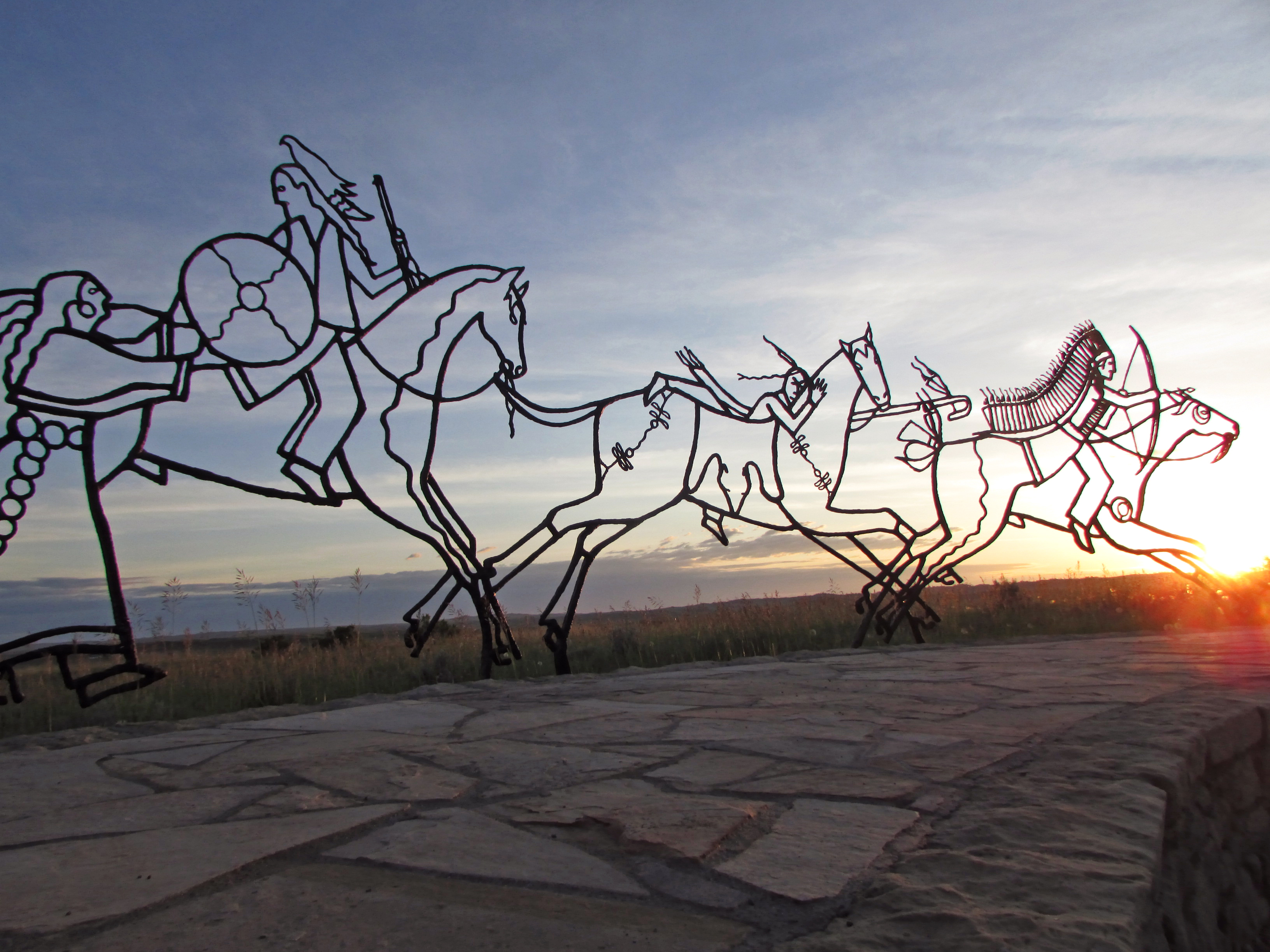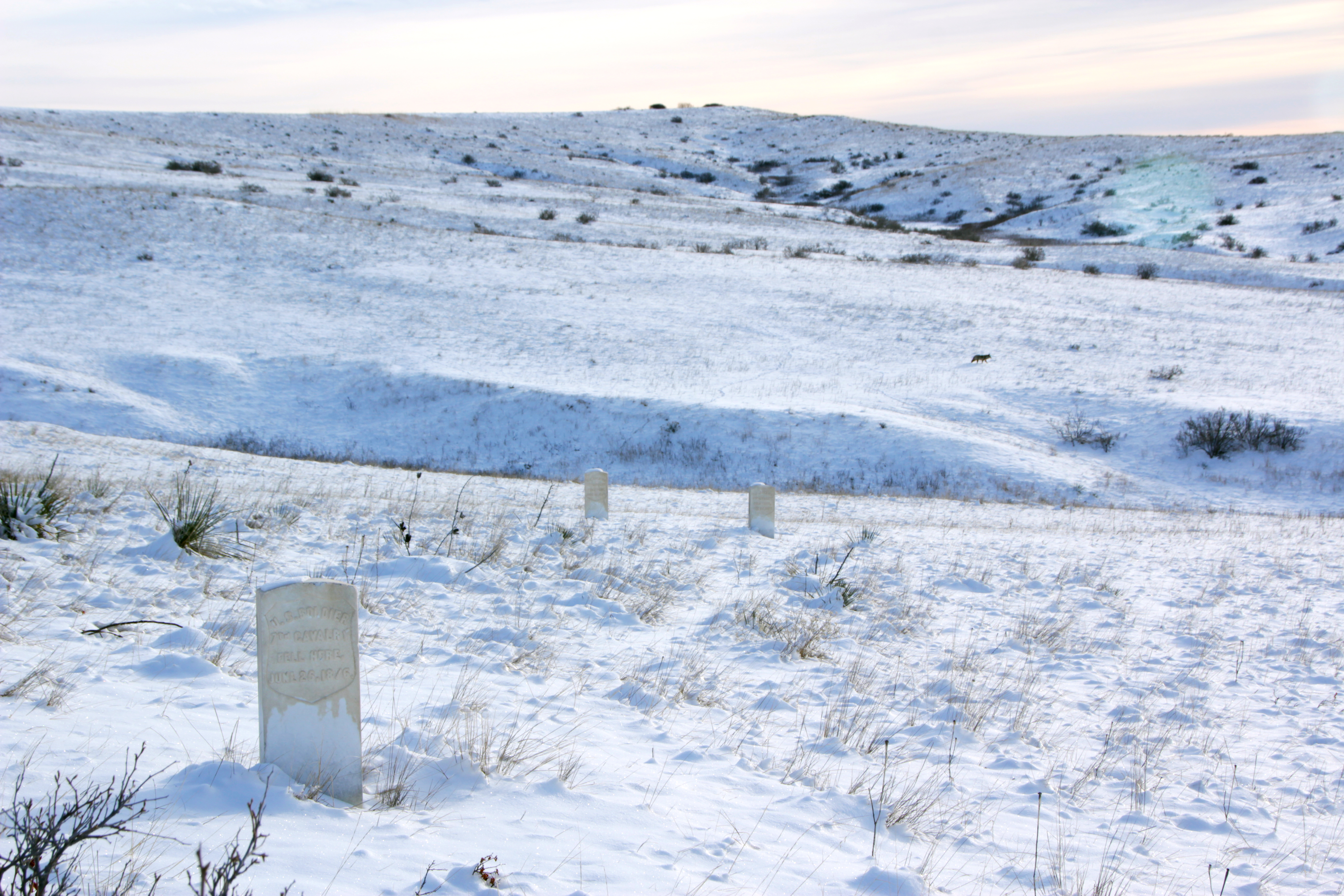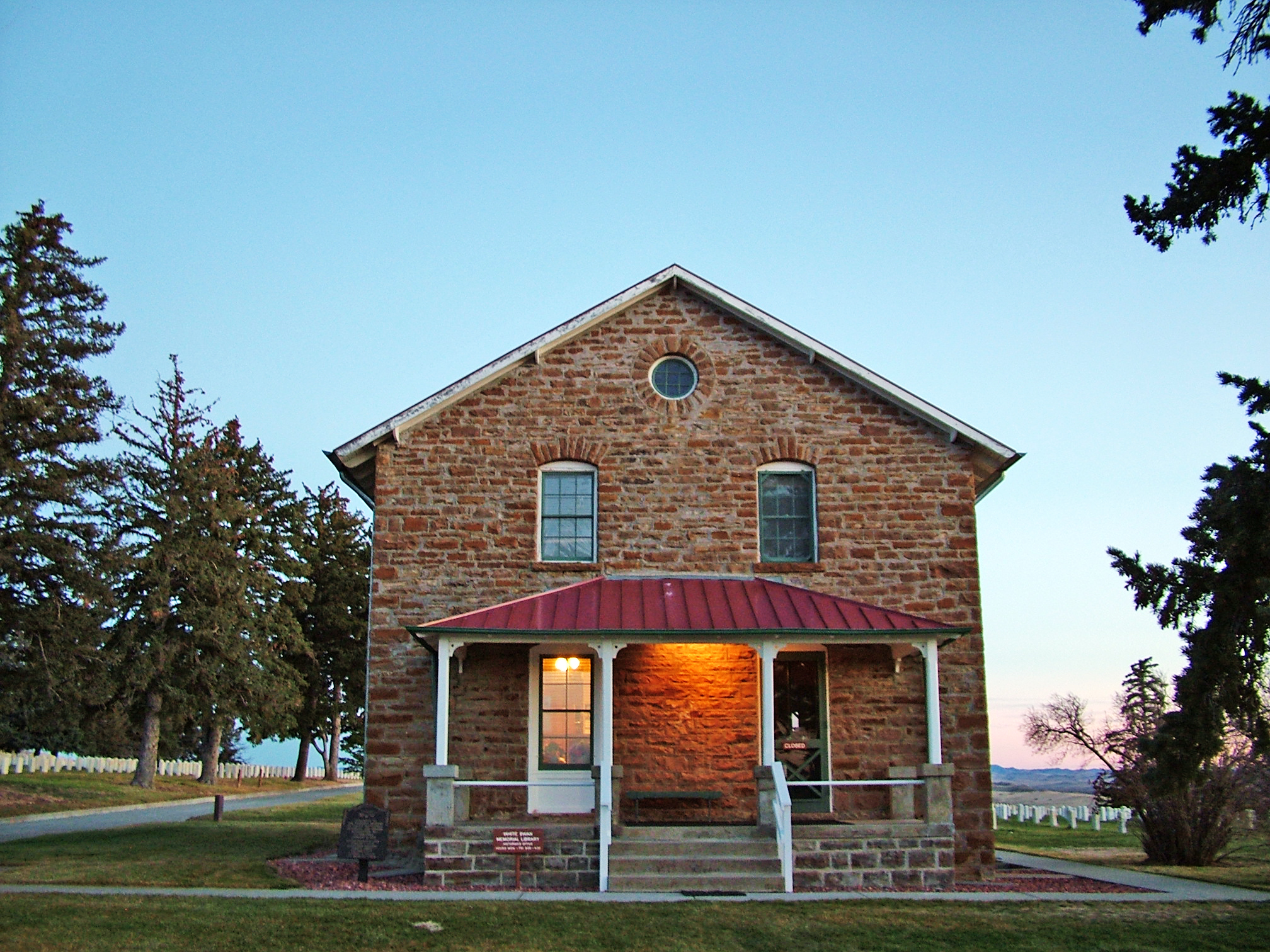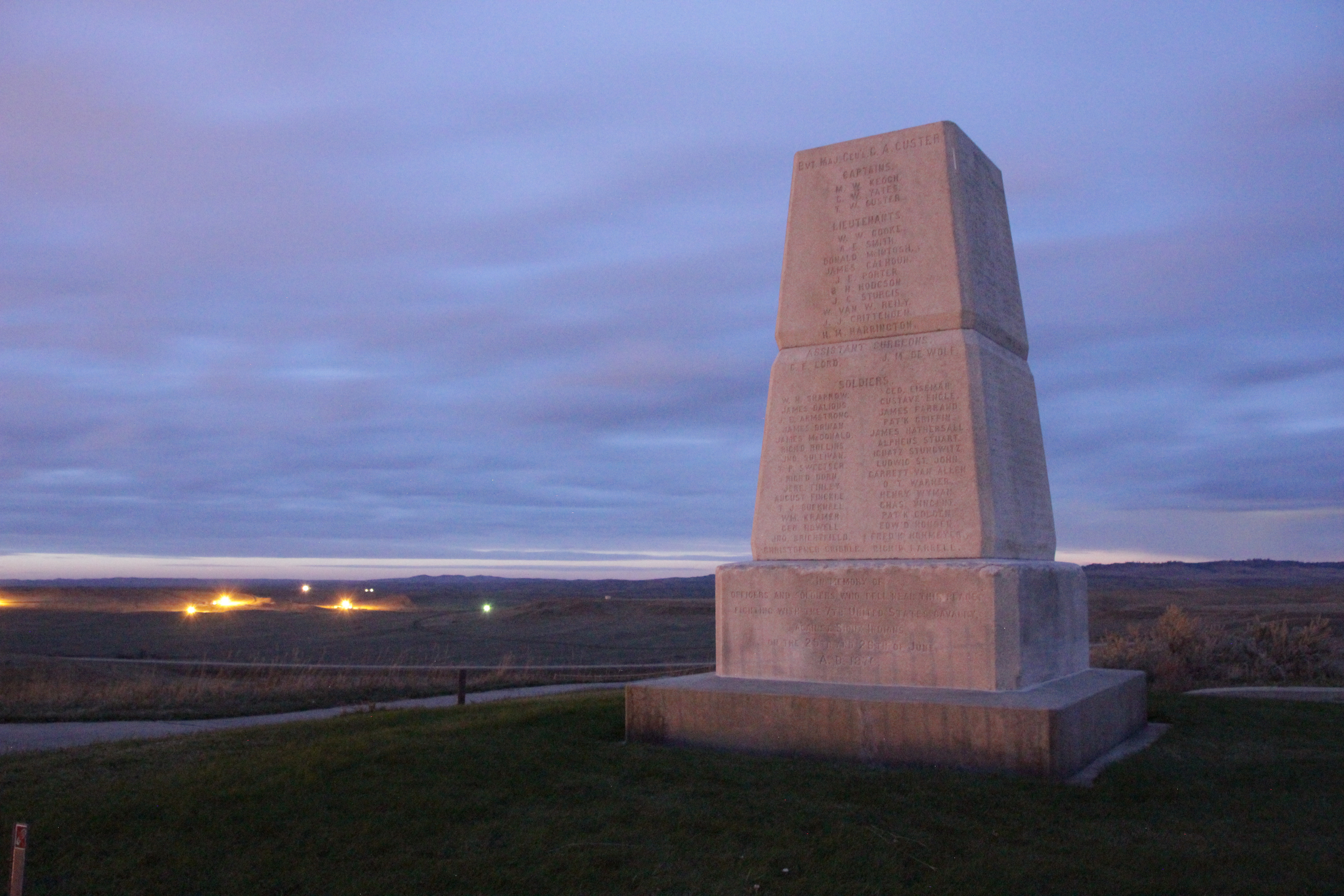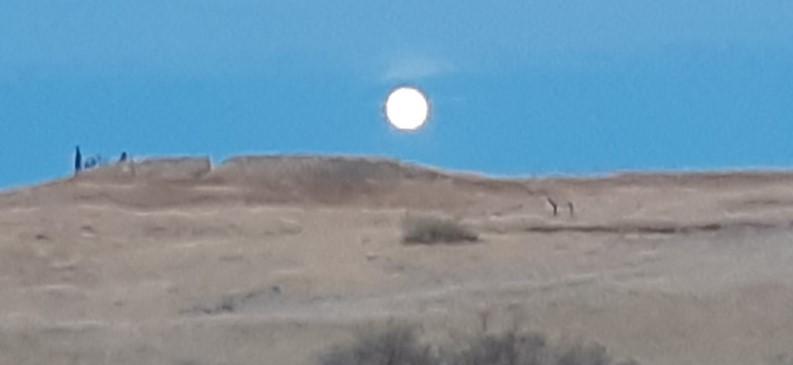This land is a place to honor and reflect on the sacrifices made here on June 25 and 26, 1876, when Lakota, Cheyenne, and Arapaho warriors fought against a deliberate attack by the U.S. Army's 7th Cavalry, led by Lt. Col. George Custer, who sought to enforce policies that threatened their traditional way of life. How are the results of the battle felt in the West and Indigenous communities today?
Indian Memorial
The Indian Memorial is a circular earthwork carved gently into the prairie. The walls carry the names of those who fell here as well as the words of some who fought in the battle.
Headstones in the winter
The monument and battlefield are open year round, even in winter when snow coats the ground.
Stone House
The stone house once served as a house for the Superintendent and their family. It has been renovated and restored and now serves as an office and research area.
Seventh Calvary Memorial at Dusk
About 40 to 50 men of the original 210 were cornered on the hill where the monument now stands.
Rising Full Moon
Little Bighorn Battlefield National Monument moon rising above the Indian Memorial
